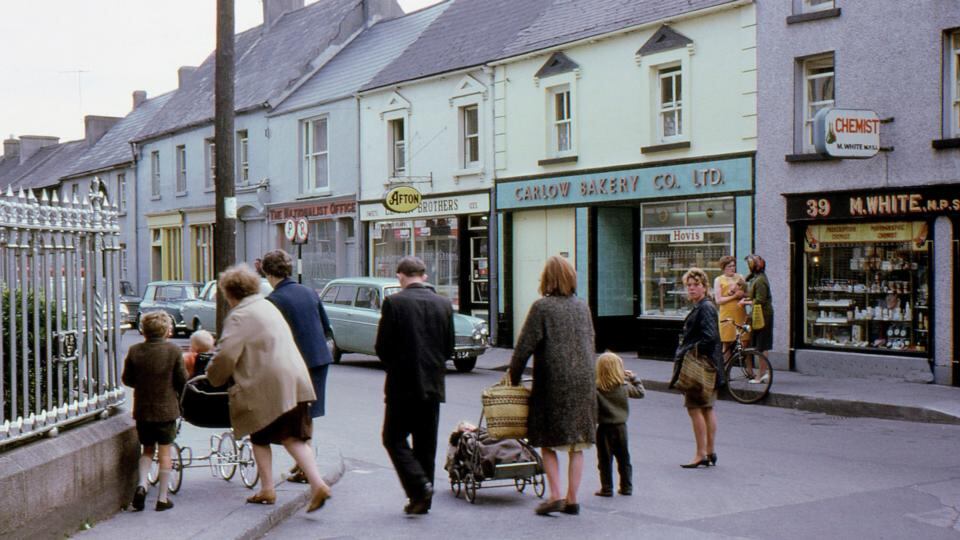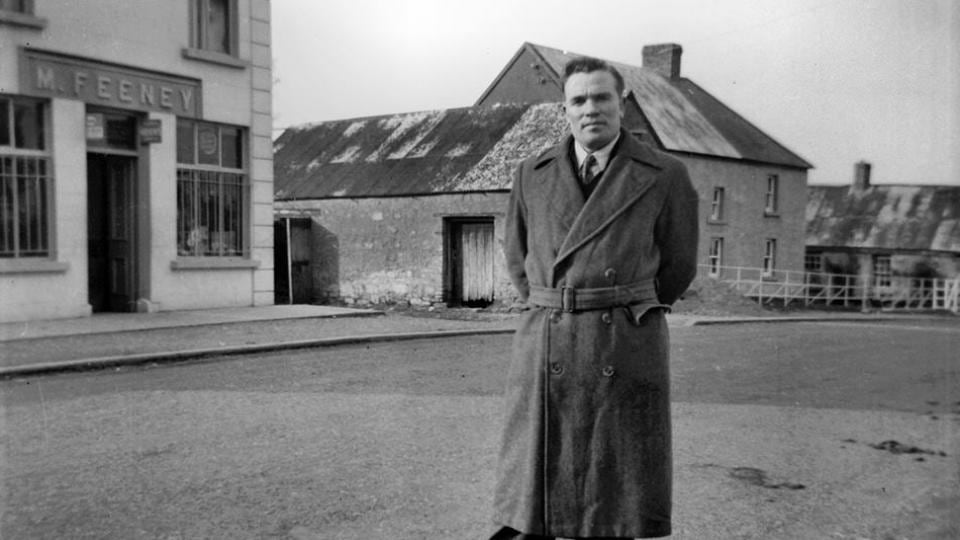"I think we are lonely for a world that is gone," says Irish-born emigrant William Muldowney (92) by way of explanation for the "astonishing" reaction to his old photographs of his childhood locality posted on Facebook.
In September his daughter, Maureen Flooks, set up a page on the social networking site called Carlow Memories to connect her father, long living in Southampton, England, to home. She did this because last year, for one of the first summers since he emigrated, he was unable to visit the boyhood locality he left in 1944.
Since then she has posted more than 100 photographs her father took during visits in the 1960s around counties Carlow, Laois and Kildare. The page has gained more than 3,000 followers.
0 of 3
The photos taken by this long-departed emigrant have stirred the memories and "likes" of the more recent generation, as Flooks has received messages from Irish emigrants in Mexico and Australia.
Among the images are intimate portraits of towns and villages standing still in time from Carlow and its surrounds: the last thatched house in Ballylinan; Bambrick's shop in Moneenroe; the church at Killeshin; the view of the sugar factory from Rossmore; a horse and trap in Graiguecullen; an overgrown playground at the Arles national school; and two women looking out a half-door at Meeting Lane in Athy.
Emigrated
Muldowney, who celebrates his 92nd birthday today, emigrated to England during the second World War when British Rail came to Carlow offering free passage to Irish workers for the railways. He settled in Southampton, married and had three children, and lives there to this day. But his "heart has always been in Ireland", Flooks says.
He began taking the photographs on his annual visits from 1967 of places and things that reminded him of what he was doing “when very innocent”, he says.
"I really enjoyed my youth in Ireland. They were the happiest years of my life. We were poor but very happy. I expected nothing and did not get very much," he says of his childhood as part of a family of nine in Ballinagore near Ballickmoyler and Arles, Co Laois.
He also took them as solace for his parents, who followed their children and emigrated to England in 1956. “They were quite lonely for Ireland . . . They had a difficult life in every way and didn’t cope well with old age.”
When he returned with the photographs that first summer his parents were “astonished”. “My mother cried,” he recalls.
After the railways, Muldowney began working at electrical retailer Currys, where he manned the camera counter and received some training in photography. When he first brought his camera to Ireland and returned armed with shots of Arles and Ballylinan his colleagues were taken aback by the clarity of the photographs – the lack of air pollution in Ireland made everything look “as clear as crystal”, he says.
The uniqueness of his photographs is heightened because few good-quality cameras were in the hands of amateurs in Ireland at the time. One summer he took a super-8mm movie camera home. “People looked at me as if I was from Radio Éireann or the BBC,” he says.
'Overwhelmed'
The father and daughter have been "absolutely overwhelmed" by comments and messages about the photographs on Facebook from people from the locality in Ireland or recent and long-departed emigrants from the area.
Flooks was going to put one of her father’s stories and memories with each photo but decided “if people comment it becomes their story”. And so it has happened as people have added their layers of memory.
“I never dreamed that people would find them that interesting, this interest now – I can’t explain,” says Muldowney.
He has hundreds of photos of the locality and has even been offered a possible book deal as a result of the Facebook page.
“It is something about the past that is more mysterious now because of the way the world is at the moment,” he says. “You look at a photo and you think, ‘Didn’t it look perfect back then?’”
William Muldowney's facebook page can be found here: https://www.facebook.com/carlowmemories










